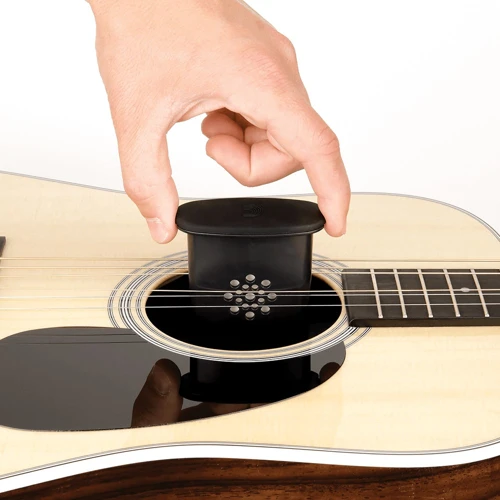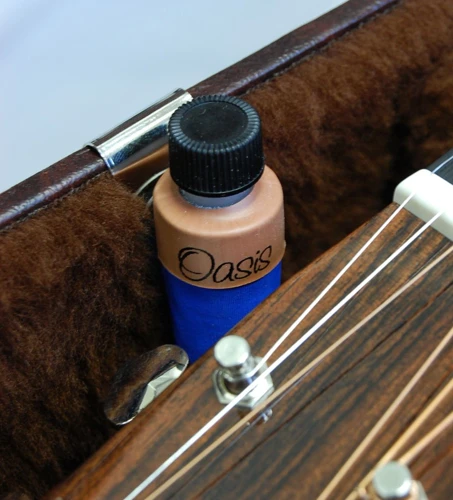As a guitar owner, you want to ensure that your instrument stays in the best possible condition. One often-overlooked factor that can significantly affect your guitar’s health is humidity. In this blog post, we will explore the importance of humidifier guitar safety and provide you with some tips to keep your guitar in top shape.
What is Humidity and Why is it Important for Guitars?
Humidity is the amount of water vapor present in the air. Guitars are made of wood, which is a hygroscopic material, meaning it absorbs and releases moisture depending on the surrounding environment. When the air is too dry, the wood in your guitar can lose moisture and shrink, leading to cracks, warping, and other damage. On the other hand, if the air is too humid, the wood can absorb too much moisture and swell, causing glue joints to fail and action to increase.
How to Measure Humidity
To ensure your guitar’s safety, it’s essential to monitor the humidity levels in the room where you store your instrument. You can measure humidity using a hygrometer, which is a device that measures the amount of moisture in the air. Ideally, the humidity level in the room where you store your guitar should be between 45% and 55%.
Using a Humidifier to Protect Your Guitar
If you live in a dry climate or during the winter months when the air is dryer, using a humidifier can help protect your guitar from damage. A humidifier is a device that adds moisture to the air, creating a more favorable environment for your guitar. There are two types of humidifiers you can use to protect your guitar: room humidifiers and guitar humidifiers.
Room Humidifiers
Room humidifiers are standalone devices that add moisture to the air in a room. They come in various sizes and styles, and some even have built-in hygrometers to monitor the humidity level. When using a room humidifier, make sure to place it in the same room as your guitar and monitor the humidity level regularly.
Guitar Humidifiers
Guitar humidifiers are designed to add moisture directly to the guitar’s soundhole or inside the guitar’s body. They are small and portable, making them an excellent option for guitarists who travel with their instruments. When using a guitar humidifier, make sure to follow the manufacturer’s instructions carefully to avoid over-humidifying the guitar.
Tips for Using a Humidifier with Your Guitar
Here are some tips to keep in mind when using a humidifier with your guitar:
Don’t Over-Humidify
While it’s essential to keep your guitar humidified, over-humidifying can also cause damage. Make sure to monitor the humidity level regularly and adjust the humidifier as needed.
Use Distilled Water
When using a humidifier, it’s best to use distilled water instead of tap water. Tap water contains minerals that can build up in the humidifier and cause damage. Distilled water is free of minerals and will not cause any buildup.
Clean Your Humidifier Regularly
It’s essential to clean your humidifier regularly to prevent the growth of mold and bacteria. Follow the manufacturer’s instructions for cleaning and maintenance.
Signs of Humidity Damage
Even with proper humidification, your guitar may still show signs of humidity damage. Here are some things to look out for:
Cracks
If the wood in your guitar dries out too much, it can crack. Look for cracks in the finish, binding, or wood.
Warping
When the wood in your guitar dries out, it can warp, causing the neck to bow or the body to become misshapen.
Glue Joint Failure
If the wood in your guitar absorbs too much moisture, the glue joints can fail, causing the guitar to come apart.
When it comes to taking care of your acoustic guitar, ensuring proper humidity levels is crucial. Learn more about the importance of using a quality humidifier for your guitar case and how it can help maintain your instrument’s health. Also, find out how keeping your guitar clean with the right cleaner and conditioner can prolong its lifespan. Don’t forget about the impact of using the right strings on your guitar’s longevity – explore tips on choosing the best strings for your acoustic guitar. And for added comfort while playing, check out our guide on adjusting your guitar strap for optimal playing experience.
Conclusion
Humidity is an essential factor to consider when it comes to guitar safety. Using a humidifier can help protect your guitar from damage caused by dry air, but it’s essential to monitor the humidity level regularly and follow the manufacturer’s instructions carefully. By taking these precautions, you can ensure that your guitar stays in top shape for years to come.




